FWM deals with a wide range of business to build and manage Water Supply, Sewerage and Civil Engineering facilities and equipments and geological and ground survey, soil test and maintenance.
Our ServicesSERVICE&PRODUCTS
Totally Supporting from Planning to Management by Reliable Technologies
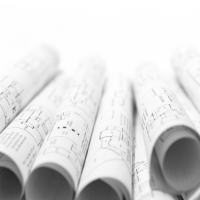
「Basic Planning」
The most important thing about the construction of all the facilities is
establishing basic planning regardless of clean water and sewage. This
is because what is needed for disposing facilities is extremely different
from area to area. For example, inhabitants and their daily work are different
from area to area, and topographies and climates are diversified.
What type of facilities is needed in the area? How should the facilities
be built? What do we check in advance, for example, an estimate of population,
water discharge prediction, etc.? The efforts of the facilities depend
on the basic planning established in this way. Establishing the basic planning
is the work which needs the most amount of know-how. Thus, 45 years achievements
of F water management are maximally utilized for the work.

「Survey」
After the basic planning is fixed, we start on field surveys in accordance
with the planning. We minutely survey the natural and social conditions
such as a topographical survey, a ground and soil survey, or forecasts
of population and water volume. If these surveys are insufficient, it is
impossible to build facilities preserving the local water environment over
the years.
In this case, whether how far necessary surveys can be conducted at the
appropriate level depends on know-how. With as little as know-how, it is
possible to adapt to circumstances. For example, we reflect a matter to
the design, which is not included in the basic planning, based on the results
of the surveys.
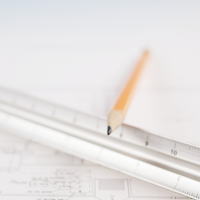
「Detailed Planning」
After detailed data in the field are completed, we conduct detailed planning
again. It is an object to specifically determine construction methods,
period, etc. By reflecting the conditions revealed by the surveys such
as forecasted significant population growth in the future, a high groundwater
level, or a weak ground, to facilities planning , and by giving economical
considerations.
This is because it is required to achieve not only size and performance but the appropriate costs such as a construction cost and a running cost, in order to build water treatment facilities necessary to the area.
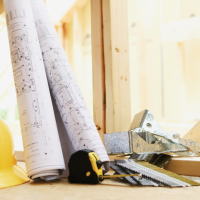
「Construction Design」
We design for conducting construction works based on the detailed planning. We make various drawings by using the know-how and our own software of 50 years work experience of F water management.
It is possible to work extremely quickly and at low cost, and to be flexibly
responsive to design changes and client's needs by developing our own software
without reliance on generalized software and using it.
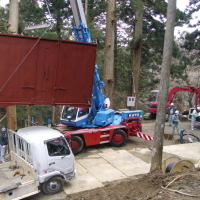
「Management of Works」
Management of works on a construction phase is important, because many
parts of the facilities of water supply and sewerage are unseen after completion.
F water management, which is totally engaged in from basic planning
to management of works, has the advantage of capability of accurately getting
the point of construction. A designer who is familiar with the facilities
personally goes to the construction field as much as possible and conducts
secure supervision of works. It is an important role for us communicate
between a client and builder.

「Water Service Institution Maintenance Management」
According to a revision of Japan's Water Supply Act on April 2002, it has become possible to entrust the business related to the management of water supply to a third party. It is required to reduce the maintenance costs and operate the facilities effectively in order to satisfy the quality, quantity, and prices of the water supply. F water management Co., Ltd. comprehensively operates and maintains an entire water project using applying a great deal of knowledge and experience, which have been accumulated for years as a comprehensive consulting firm of water supply.
Preserving Water, a Source of Life

「Water Supply, Simple Waterworks and Sewerage」
In the past, purity, inexpensiveness, and abundance were called "the three principles of water". If a lop of clean water can be inexpensively provided, the mission of water supply is supposedly fulfilled. However, it is not enough in this day and age. It has been required to satisfy the requirements such as "delicious water with confidence" and "stable water supply as a lifeline" in addition to the above mentioned three principles.
That is because the natural environment changes such as river water clouds
and lake water smells, and the social structure changes such as chaos is
caused by disrupted water supply. In the modern facilities of water supply,
it is essential to study about methods of water intake, appropriate methods
of water treatment in response to water quality, and structures having
resistance to earthquakes and disasters.
In this case, what is important is not the technology itself but know-how.
Long years of experience of F water management are useful in selecting
the technologies of water intake, water purification, water distribution,
and water supply and their combination.
・Distribution Reservoir(Kamishihi Village of Fukui Prefecture, Japan)
・Mabuchi Purification Plant of Chubu Waterworks Department of Shiga Public
Enterprise Bureau(Japan)
・Membrane Filtration and Purification Plant of Koka City Daiichi Water Resource(Japan)
・Chuo Distribution Reservoir(Kawage Town of Mie Prefecture, Japan)
・Mano Purification Plant of Enterprise Bureau(Otsu City, Japan)
Clean Water to Clean Nature
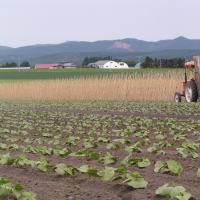
「Improvement of farming village and fishing village」
The importance of preservation of water environment has been discussed. Sewer water is the greatest cause of environmental pollution. Sewerage treatment, by which the sewer water is purified to return to lakes, rivers, and the sea, is a fundamental and important thing to properly remove rainwater and preserve water environment.
It becomes a major problem how to collect and carry sewer water effectively
from a lot of overflows scattered over a large area to a treatment plant.
The specialties of FWM having a wealth of know-how are to build the facilities,
which are economical and easy of operation & maintenance with consideration
for life cycle cost. For example we build a network sewerage system, through
which water naturally flows down by making use of the inclination of a
land, and set up a pump at a suitable place. Shiga prefecture has Lake
Biwa and is required to achieve the most stringent environmental standard
in Japan. We can conduct total consulting capable of inspecting underground
piping and designing water supply and sewerage simultaneously. That is
evidenced by a wealth of results of designing the facilities of sewerage,
which is established through our many years’ experience.
・Sewerage Vacuum Station (Yasu City of Shiga Prefecture, Japan)
・Agricultural Settlement Drainage Facility (Koka City of Shiga Prefecture,
Japan)
・Arterial Culvert of Konan Chubu Basin (Shiga Prefecture, Japan)
・Sewerage Relay Pump Station of Public Sewerage (Konan City of Shiga
Prefecture, Japan)
Beautiful Environment to the People Leading the Next
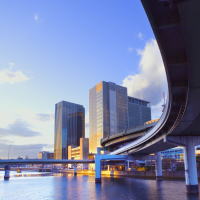
「Total management of water, a source of life」
F water management has engaged in implementation of clean water environment for many years. It is the most required thing to make efforts to sufficiently use a large number of facilities in the future, which have been built in the past.
The time has drastically changed because of environmental destruction on
a global scale such as the change of atmospheric environment and deforestation.
Social demands for public services and facilities have changed moment to
moment. However, it is important to repair, maintain, and enhance the facilities
for the future, which are economical and easy to maintain, such as applying
new technologies in light of environmental components such as air, sound,
and vibration by accurately understanding each needs.
The above mentioned measures lead to minimizing the new load to the earth, and also lead to the measures to address the declining birthrate and the aging population, which are regarded as future issues.
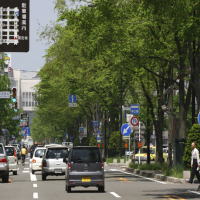
「Survey and proposal for community development」
Soil and geological properties is the base of various structures. The appropriate evaluation and judgment of these properties have a considerable influence on the validity of design and construction. However, it is difficult to evaluate the soil properties, and therefore adopting an appropriate efficient of the soil properties sometimes needs significantly profound experiences. Staff of Geological Survey is focusing on making a proposal as a consultant by understanding the needs of clients.
We adopt the process as an example of the procedure of business activities as follows:
(1)Conducting a field survey and predicting the mechanism of ground to propose a necessary research;
(2)Proposing survey and test items necessary to a design plan; and
(3)Analyzing the results of the survey and tests and feed back to the design.
Engineering department is in charge of ground survey (soft ground, decomposed granite soil, slope stability, etc.), field survey, material problems, deformation survey (decrepit problems), earthquake resistance, soil pollution, groundwater survey, etc.
Particularly, we focus on ground survey, earthquake resistance (liquefaction), material problems, and decrepit problems. We would like to drastically contribute to the area’s development responding to the needs of clients.
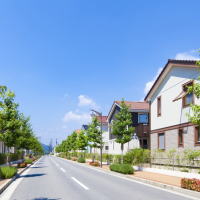
「A challenge to wonderful space instead of living」
It is the construction staff that plays a role in the future of F water management and is steadily producing strong results at present. But we do not just build a building. Our object is not only to live, but also to create a more comfortable living environment. For example, we pursue to design solicitous office buildings and houses such as functional space designing in the light of the behaviors of dwellers and workers, and creating a human-friendly form and housing space.
It is possible to design mentioned above, because we have unique know-how accumulated in designing water treatment facilities. Water treatment-related facilities are the combination of “civil engineering technology (underground department)” and “building technology (ground department).” Construction also requires know-how.
So far, we have understood that not only water but also a landscape is an essential part of the environment. Therefore, even if we can make clean water, it is disqualified that the facilities to make clean water spoil the landscape. Needless to say, the facilities should not be hard to use neglecting human engineering and economic efficiency.
The objective of F water management is to build the facilities which is in harmony with the environment, and more functional and comfortable. As a result, it becomes possible to accumulate know-how in order to not only live but also create the living environment.
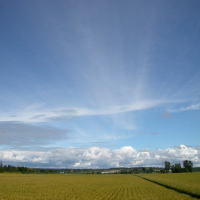
「Challenge to preserve a productive environment」
It is “roads, rivers, and agricultural civil engineering” that fundamentally support our lives.
“Roads, which connect town to town, and person to person, are essential to support and maintain our lives, and important to promote attractive regional construction.
“Rivers” have been located in the center of life since ancient times, and have provided people with plenitude and peace. However, pristine “rivers” sometimes become aggressive and show a wild temper. Highly advanced civil engineering technology enables “the harmony of nature and mankind”.
“Agricultural engineering” develops an agricultural basis, and is essential to providing stable crops.
In order to live secure and stable lives, the know-how, which has been accumulated in the department of “the general civil engineering” of F water management for many years, is used to the maximum.
banner
F water management Co., Ltd.
Head Office
1-6-11 Chuou, Otsu City, Shiga
520-0043 Japan
TEL +81-77-524-1411
FAX +81-77-524-1412
For International Business:
Mobile#1 +8801878092153
Mobile#2 +8801674323230